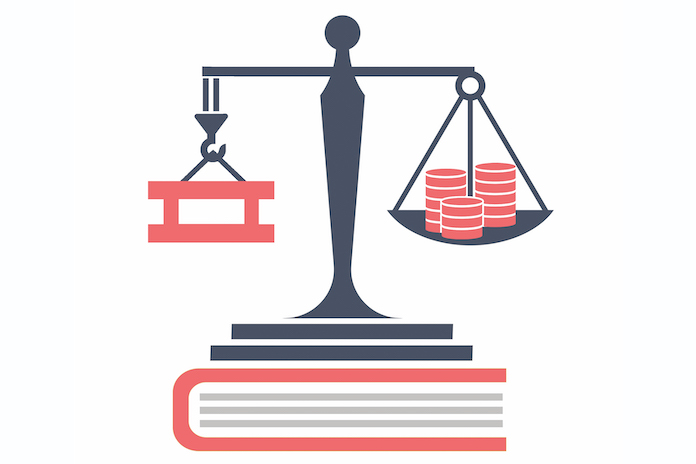
In the dynamic world of construction, managing legal risks is crucial to ensure smooth project execution and protect the interests of all stakeholders involved. From obtaining the right permits to adhering to safety protocols and contractual obligations, construction companies must be well-versed in the Do’s and Don’ts of legal risk management. This comprehensive guide highlights essential practices that the construction industry should follow and pitfalls they should avoid to mitigate legal liabilities effectively. By understanding and implementing these best practices, construction companies can navigate through potential legal challenges, safeguard their reputation, and foster a culture of compliance and transparency in their operations. Join us as we explore the key strategies that will empower construction professionals to limit legal risks and build a foundation of success in an ever-evolving industry.
Do’s:
- Obtain Proper Permits: Always ensure you have the necessary permits and approvals before commencing any construction project. This includes building permits, zoning permits, environmental permits, and any other permits required by local authorities.
- Use Written Contracts: Draft clear and comprehensive contracts that outline project scope, timelines, payment terms, and dispute resolution mechanisms. It is advisable to involve legal professionals in the contract drafting process to ensure clarity and enforceability.
- Conduct Thorough Due Diligence: Research and vet potential contractors, suppliers, and partners to ensure they have a good track record and are financially stable. Thorough due diligence minimizes the risk of engaging with unreliable or unqualified parties and protects against potential legal issues.
- Adhere to Building Codes and Standards: Comply with local building codes and industry standards to avoid potential legal issues related to safety and quality. Familiarize yourself with the specific codes and standards applicable to your project and ensure that construction activities meet or exceed the required standards.
- Implement Safety Protocols: Prioritize worker safety by enforcing proper safety measures and providing necessary training. Establish comprehensive safety protocols that address potential hazards, promote a safe work environment, and comply with Occupational Safety and Health Administration (OSHA) standards.
- Document Everything: Keep detailed records of all project-related communications, changes, and decisions to protect against potential disputes. Clear documentation serves as evidence in case of legal disputes and helps establish a timeline of events.
- Secure Insurance Coverage: Obtain adequate insurance coverage, including general liability, workers’ compensation, and property insurance, to mitigate financial risks. Having comprehensive insurance coverage safeguards against unexpected accidents, property damage, and legal claims.
Don’ts:
- Don’t Neglect Contractual Obligations: Avoid neglecting or deviating from the terms of the contract, as it may lead to breach of contract claims. Failure to meet contractual obligations can result in legal disputes, financial penalties, and damage to your professional reputation.
- Don’t Cut Corners: Avoid compromising on quality, safety, or materials to save time or money, as it may lead to legal liabilities. Cutting corners may result in compromised structural integrity, safety hazards, and legal repercussions.
- Don’t Ignore Change Orders: Properly document and execute change orders to avoid disputes and claims related to scope changes. Clearly outline the revised scope, timelines, and associated costs to ensure mutual agreement and avoid conflicts.
- Don’t Overlook Permitting Requirements: Neglecting or overlooking permitting requirements can lead to costly delays and legal consequences. Failure to comply with permitting regulations can result in work stoppages, fines, or even project shutdowns.
- Don’t Ignore Employment Laws: Comply with employment laws, including wage and hour regulations and worker classification, to avoid labor-related legal risks. Failure to comply with employment laws can result in lawsuits, penalties, and reputational damage.
- Don’t Ignore Environmental Regulations: Follow environmental regulations and properly handle hazardous materials to prevent environmental violations. Implement appropriate measures to minimize environmental impact, properly dispose of waste, and comply with relevant environmental standards.
- Don’t Disregard Subcontractor Agreements: Ensure clear subcontractor agreements are in place to avoid misunderstandings and payment disputes. Maintain open lines of communication and document any changes or deviations from the original agreement.
By following these Do’s and Don’ts, construction companies can proactively minimize legal risks, protect their reputation, and ensure smooth project execution. Implementing proper protocols, staying informed about legal requirements, and seeking professional guidance when needed are essential steps in limiting legal liabilities and fostering a successful construction business.
What are some do's and don'ts to limit legal risk in the construction industry?
The article discusses several do's and don'ts to limit legal risk in the construction industry. Some do's include ensuring clear and detailed contracts, obtaining necessary permits and licenses, maintaining accurate and organized records, providing proper training to workers, and adhering to safety regulations. On the other hand, some don'ts include avoiding verbal agreements, neglecting insurance coverage, ignoring environmental regulations, and failing to address construction defects promptly.
